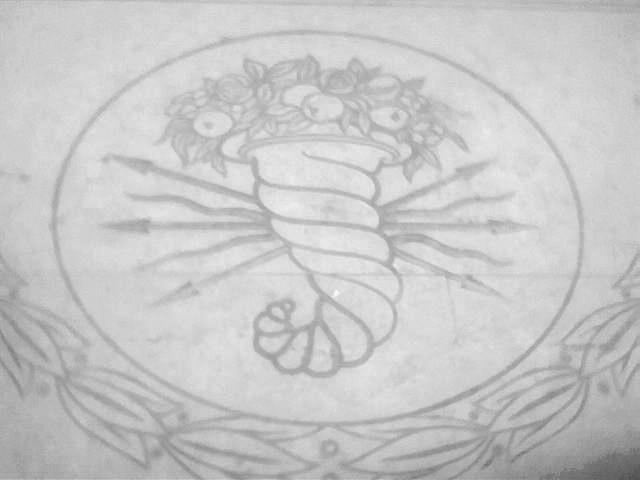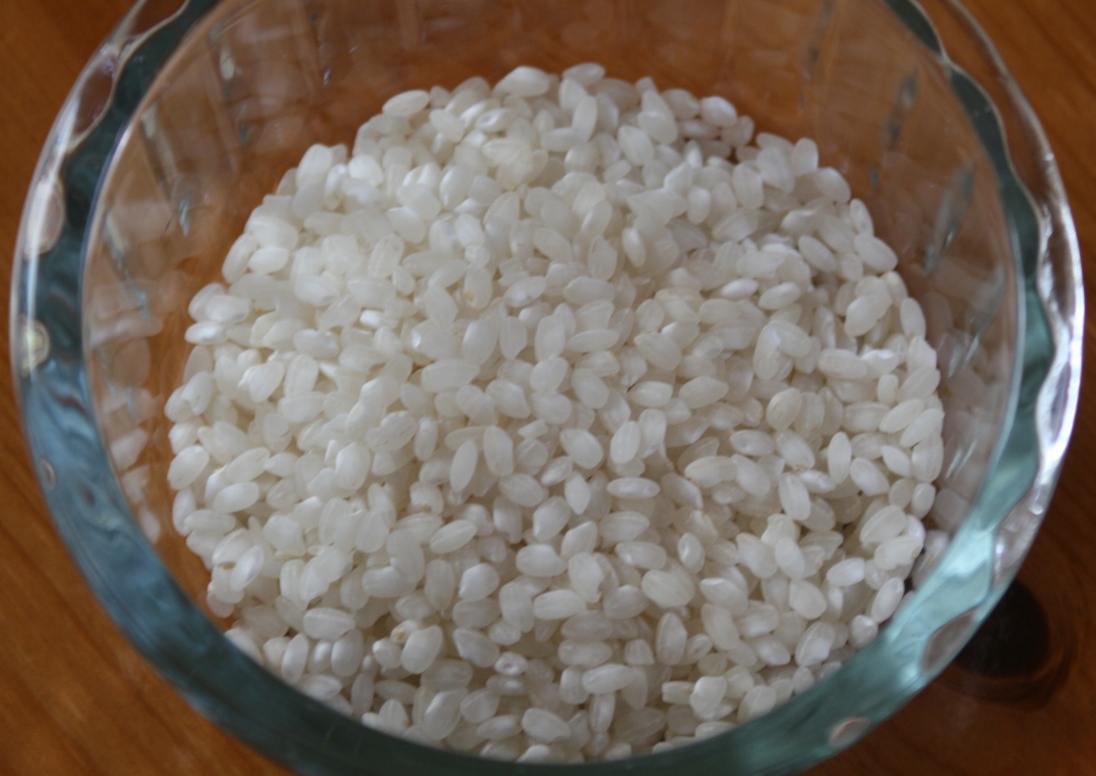|
Calasparra Rice
Calasparra rice ( es, arroz de Calasparra) is a variety of rice native to the region of Murcia, Spain. Along with rice produced in Valencia and the Ebro Delta, it is one of three Spanish rices with a Denominación de Origen, since 1986. It is named for the municipality of Calasparra. Rice cultivation is documented in Murcia dating back to the 14th century, and is thought to have been introduced to the area by Muslim occupiers. The use of terrace irrigation and well-drained soil make the region ideal for rice cultivation. Calasparra rice is matured longer than other strains of rice, and is exceptionally absorbent, making it well-suited for the preparation of paella. See also * Bomba rice Bomba rice ( es, arroz bomba; va, arròs bomba) is a short-grain variety of rice ('' Oryza sativa'' L.), primarily cultivated in the eastern parts of Spain. It is commonly used in paella and other dishes in Valencian cuisine, and is often refe ... — also known as Valencia rice Refere ... [...More Info...] [...Related Items...] OR: [Wikipedia] [Google] [Baidu] |
Oryza
''Oryza'' is a genus of plants in the grass family. It includes the major food crop rice (species ''Oryza sativa'' and ''Oryza glaberrima''). Members of the genus grow as tall, wetland grasses, growing to tall; the genus includes both annual and perennial species. ''Oryza'' is situated in tribe Oryzeae, which is characterized morphologically by its single-flowered spikelets whose glumes are almost completely suppressed. In ''Oryza'', two sterile lemma simulate glumes. The tribe Oryzeae is in subfamily Ehrhartoideae, a group of Poaceae tribes with certain features of internal leaf anatomy in common. The most distinctive leaf characteristics of this subfamily are the arm cells and fusoid cells found in their leaves.Heywood, V.H. Flowering Plants of the World 1993 Oxford University Press One species, Asian rice ( ''O. sativa''), provides 20% of global grain and is a food crop of major global importance. The species are divided into two subgroups within the genus. Species Insi ... [...More Info...] [...Related Items...] OR: [Wikipedia] [Google] [Baidu] |
Murcia
Murcia (, , ) is a city in south-eastern Spain, the Capital (political), capital and most populous city of the autonomous community of the Region of Murcia, and the List of municipalities of Spain, seventh largest city in the country. It has a population of 460,349 inhabitants in 2021 (about one third of the total population of the Region). The total population of the metropolitan area is 672,773 in 2020, covering an urban area of 1,230.9 km2. It is located on the Segura, Segura River, in the southeast of the Iberian Peninsula. It has a climate with hot summers, mild winters, and relatively low precipitation. Murcia was founded by the emir of Cordoba Abd ar-Rahman II in 825 with the name ''Mursiyah'' ( ar, مرسية). It is now mainly a services city and a University of Murcia, university town. Highlights for visitors include the Cathedral of Murcia and a number of baroque architecture, baroque buildings, renowned local cuisine, Holy Week procession, works of art by the famous ... [...More Info...] [...Related Items...] OR: [Wikipedia] [Google] [Baidu] |
Spain
, image_flag = Bandera de España.svg , image_coat = Escudo de España (mazonado).svg , national_motto = '' Plus ultra'' ( Latin)(English: "Further Beyond") , national_anthem = (English: "Royal March") , image_map = , map_caption = , image_map2 = , capital = Madrid , coordinates = , largest_city = Madrid , languages_type = Official language , languages = Spanish , ethnic_groups = , ethnic_groups_year = , ethnic_groups_ref = , religion = , religion_ref = , religion_year = 2020 , demonym = , government_type = Unitary parliamentary constitutional monarchy , leader_title1 = Monarch , leader_name1 = Felipe VI , leader_title2 = Prime Minister , leader_name2 = Pedro Sánchez , legislature = ... [...More Info...] [...Related Items...] OR: [Wikipedia] [Google] [Baidu] |
Rice
Rice is the seed of the grass species '' Oryza sativa'' (Asian rice) or less commonly '' Oryza glaberrima'' (African rice). The name wild rice is usually used for species of the genera '' Zizania'' and ''Porteresia'', both wild and domesticated, although the term may also be used for primitive or uncultivated varieties of '' Oryza''. As a cereal grain, domesticated rice is the most widely consumed staple food for over half of the world's human population,Abstract, "Rice feeds more than half the world's population." especially in Asia and Africa. It is the agricultural commodity with the third-highest worldwide production, after sugarcane and maize. Since sizable portions of sugarcane and maize crops are used for purposes other than human consumption, rice is the most important food crop with regard to human nutrition and caloric intake, providing more than one-fifth of the calories consumed worldwide by humans. There are many varieties of rice and culinary preferences t ... [...More Info...] [...Related Items...] OR: [Wikipedia] [Google] [Baidu] |
Autonomous Communities Of Spain
eu, autonomia erkidegoa ca, comunitat autònoma gl, comunidade autónoma oc, comunautat autonòma an, comunidat autonoma ast, comunidá autónoma , alt_name = , map = , category = Autonomous administrative division , territory = , upper_unit = , start_date = 1979–1983 , legislation_begin = Spanish Constitution of 1978 , legislation_end = , end_date = , current_number = 17 autonomous communities 2 autonomous cities , number_date = , type = , status = , exofficio = , population_range = Autonomous communities:319,914 ( La Rioja) – 8,464,411 ( Andalusia)Autonomous cities:84,202 ( Ceuta) – 87,076 (Melilla) , area_range = Autonomous communities:4,992 km2 (Balearic Islands) – 94,223 km2 (Castile and León)Autonomous cities:12.3 km2 (Melilla) – 18.5 km2 ( Ceuta) , government = Autonomous government , subdivision = ... [...More Info...] [...Related Items...] OR: [Wikipedia] [Google] [Baidu] |
Valencia
Valencia ( va, València) is the capital of the autonomous community of Valencia and the third-most populated municipality in Spain, with 791,413 inhabitants. It is also the capital of the province of the same name. The wider urban area also comprising the neighbouring municipalities has a population of around 1.6 million, constituting one of the major urban areas on the European side of the Mediterranean Sea. It is located on the banks of the Turia, on the east coast of the Iberian Peninsula, at the Gulf of Valencia, north of the Albufera lagoon. Valencia was founded as a Roman colony in 138 BC. Islamic rule and acculturation ensued in the 8th century, together with the introduction of new irrigation systems and crops. Aragonese Christian conquest took place in 1238, and so the city became the capital of the Kingdom of Valencia. The city's population thrived in the 15th century, owing to trade with the rest of the Iberian Peninsula, Italian ports and other loca ... [...More Info...] [...Related Items...] OR: [Wikipedia] [Google] [Baidu] |
Ebro Delta
The Ebro Delta ( ca, Delta de l'Ebre, ; es, Delta del Ebro, ) is the delta region of the Ebro River ( ca, Ebre, links=no, es, Ebro, links=no) in the southwest of the Province of Tarragona in the region of Catalonia in Spain. It is located on the Mediterranean Sea, and is the northernmost point, by some designations, of the Gulf of Valencia. Its location per Ramsar site designation is . Geography The Ebro Delta is one of the largest wetland areas in the western Mediterranean region, at .Ebro.info: Ebro Delta Natural Park . accessed 5.22.2011 The Ebro delta has expand ... [...More Info...] [...Related Items...] OR: [Wikipedia] [Google] [Baidu] |
Calasparra
Calasparra () is a municipality in the autonomous community of Murcia, Spain. It shares borders with Cieza, Mula, Cehegín, Moratalla and province of Albacete. History There were people living in Calasparra during the Bronze and Iron Ages. The present-day municipality was also occupied by people during the Roman Iberian Peninsula era as largely attested by several ceramic remains. There is archaeological evidence of the presence of people during the Muslim Iberian Peninsula era in the territory. A remarkable site is Villa Vieja or Despoblado de Villa Vieja, which consists of an ancient hamlet. Since the Moors' conquest of the Iberian Peninsula, there was an aspiration from some Christian kingdoms to conquer the Peninsula. The aspiration led to wars and also resulted in the acquisition of territories for the Christian kingdoms. The Kingdom of Castile obtained the Taifa of Murcia, the region where Calasparra was, in 1243 because the king of the Taifa felt under pressure and ... [...More Info...] [...Related Items...] OR: [Wikipedia] [Google] [Baidu] |
Muslim Conquest Of Spain
The Umayyad conquest of Hispania, also known as the Umayyad conquest of the Visigothic Kingdom, was the initial expansion of the Umayyad Caliphate over Hispania (in the Iberian Peninsula) from 711 to 718. The conquest resulted in the decline of the Visigothic Kingdom and the establishment of the Umayyad Wilayah of Al-Andalus. During the caliphate of the sixth Umayyad caliph al-Walid I (), forces led by Tariq ibn Ziyad disembarked in early 711 in Gibraltar at the head of an army consisting of Berbers from north Africa. After defeating the Visigothic king Roderic at the decisive Battle of Guadalete, Tariq was reinforced by an Arab force led by his superior ''wali'' Musa ibn Nusayr and continued northward. By 717, the combined Arab-Berber force had crossed the Pyrenees into Septimania. They occupied further territory in Gaul until 759. Background The historian al-Tabari transmits a tradition attributed to the Caliph Uthman who stated that the road to Constantinople was through ... [...More Info...] [...Related Items...] OR: [Wikipedia] [Google] [Baidu] |
Terrace Irrigation
In agriculture, a terrace is a piece of sloped plane that has been cut into a series of successively receding flat surfaces or platforms, which resemble steps, for the purposes of more effective farming. This type of landscaping is therefore called terracing. Graduated terrace steps are commonly used to farm on hilly or mountainous terrain. Terraced fields decrease both erosion and surface runoff, and may be used to support growing crops that require irrigation, such as rice. The Rice Terraces of the Philippine Cordilleras have been designated as a UNESCO World Heritage Site because of the significance of this technique. Uses Terraced paddy fields are used widely in rice, wheat and barley farming in east, south, southwest, and southeast Asia, as well as the Mediterranean Basin, Africa, and South America. Drier-climate terrace farming is common throughout the Mediterranean Basin, where they are used for vineyards, olive trees, cork oak, and other crops. Ancient history Te ... [...More Info...] [...Related Items...] OR: [Wikipedia] [Google] [Baidu] |
Paella
Paella (, , , , , ) is a rice dish originally from Valencia. While non-Spaniards commonly view it as Spain's national dish, Spaniards almost unanimously consider it to be a dish from the Valencian region. Valencians, in turn, regard ''paella'' as one of their identifying symbols. It is one of the best-known dishes in Spanish cuisine. The dish takes its name from the wide, shallow traditional pan used to cook the dish on an open fire, ''paella'' being the word for a frying pan in Valencian/Catalan language. As a dish, it may have ancient roots, but in its modern form, it is traced back to the mid-19th century, in the rural area around the Albufera lagoon adjacent to the city of Valencia, on the Mediterranean coast of Spain. ''Paella valenciana'' is the traditional paella of the Valencia region, believed to be the original recipe, [...More Info...] [...Related Items...] OR: [Wikipedia] [Google] [Baidu] |






